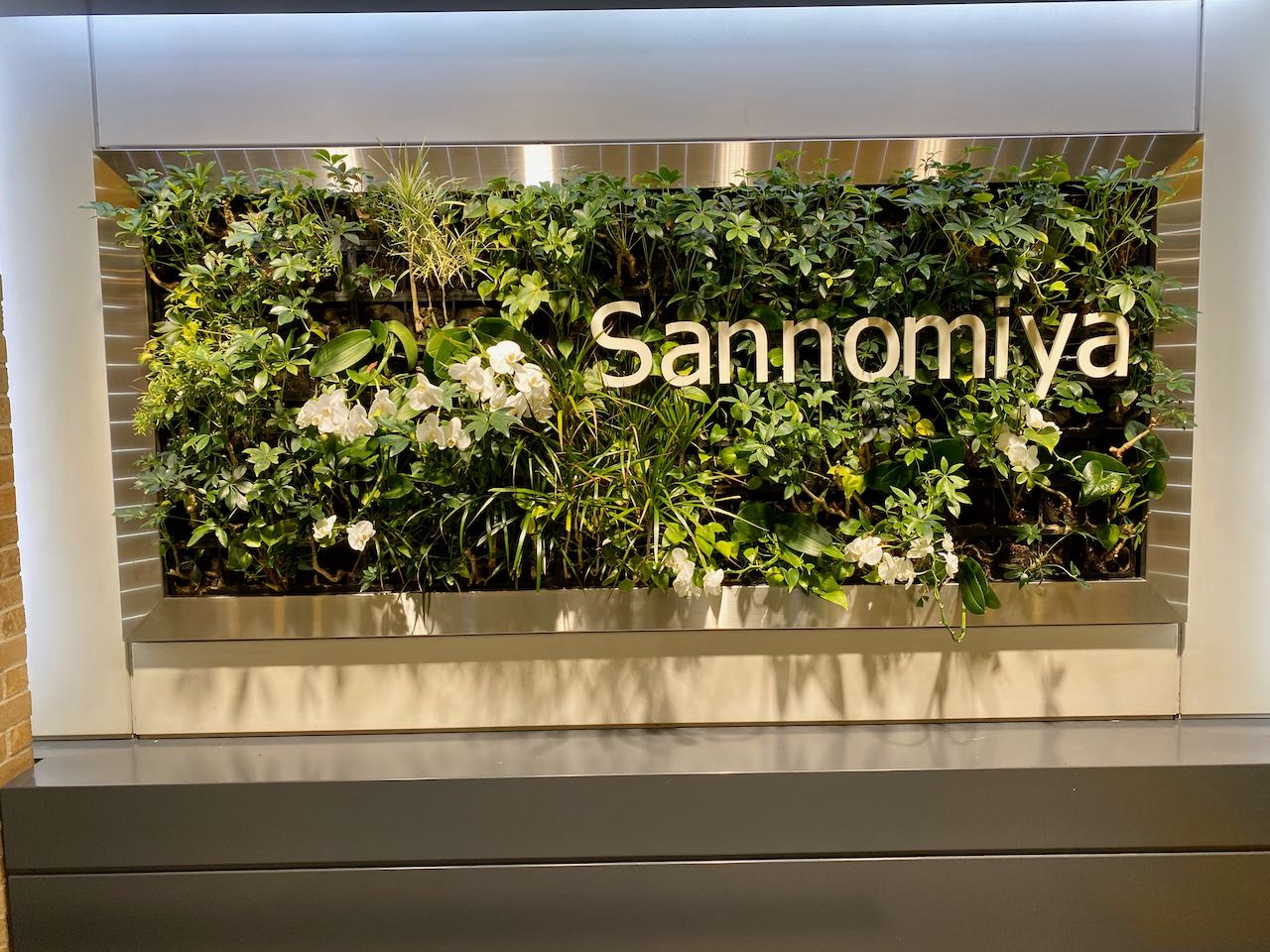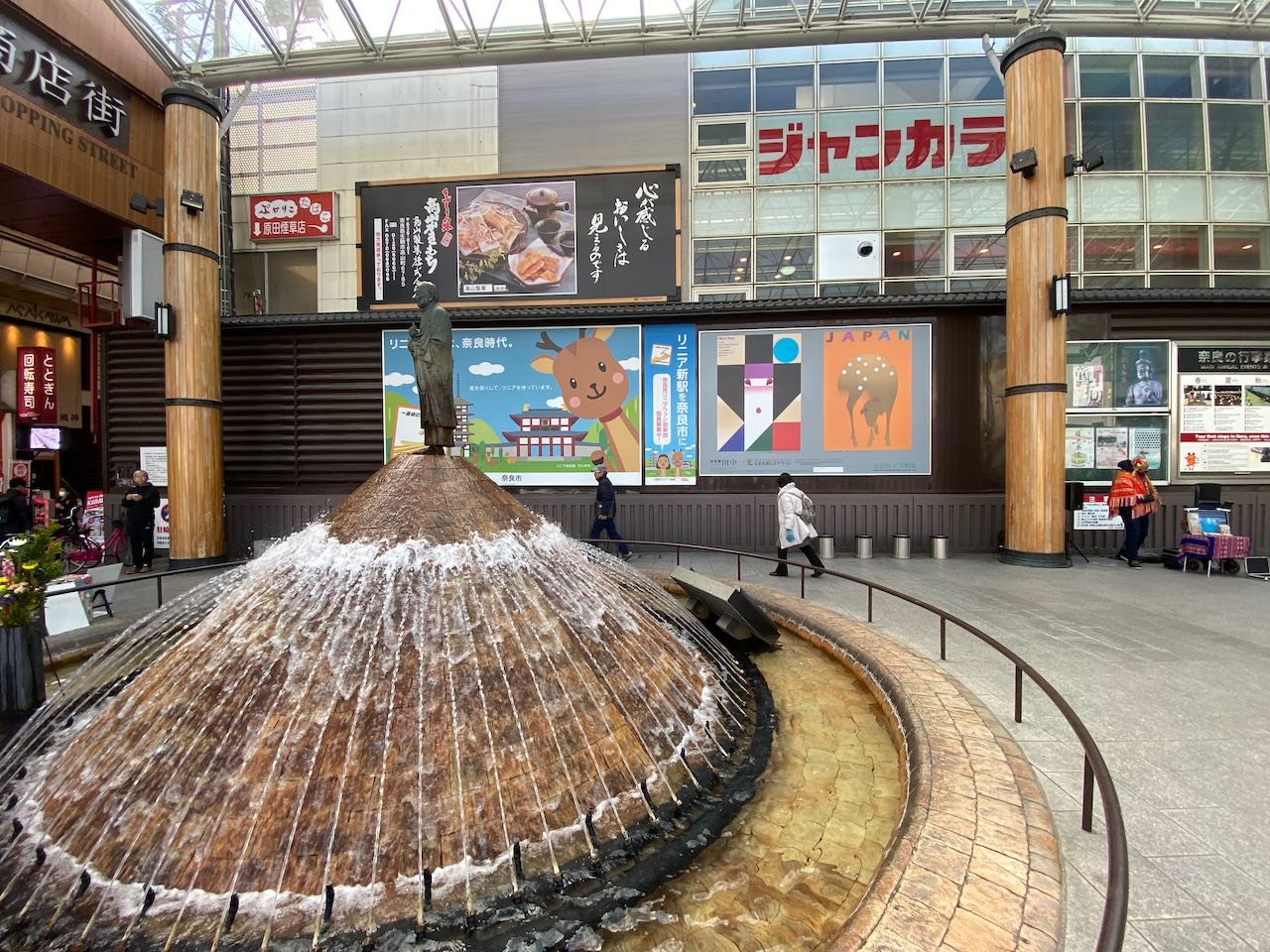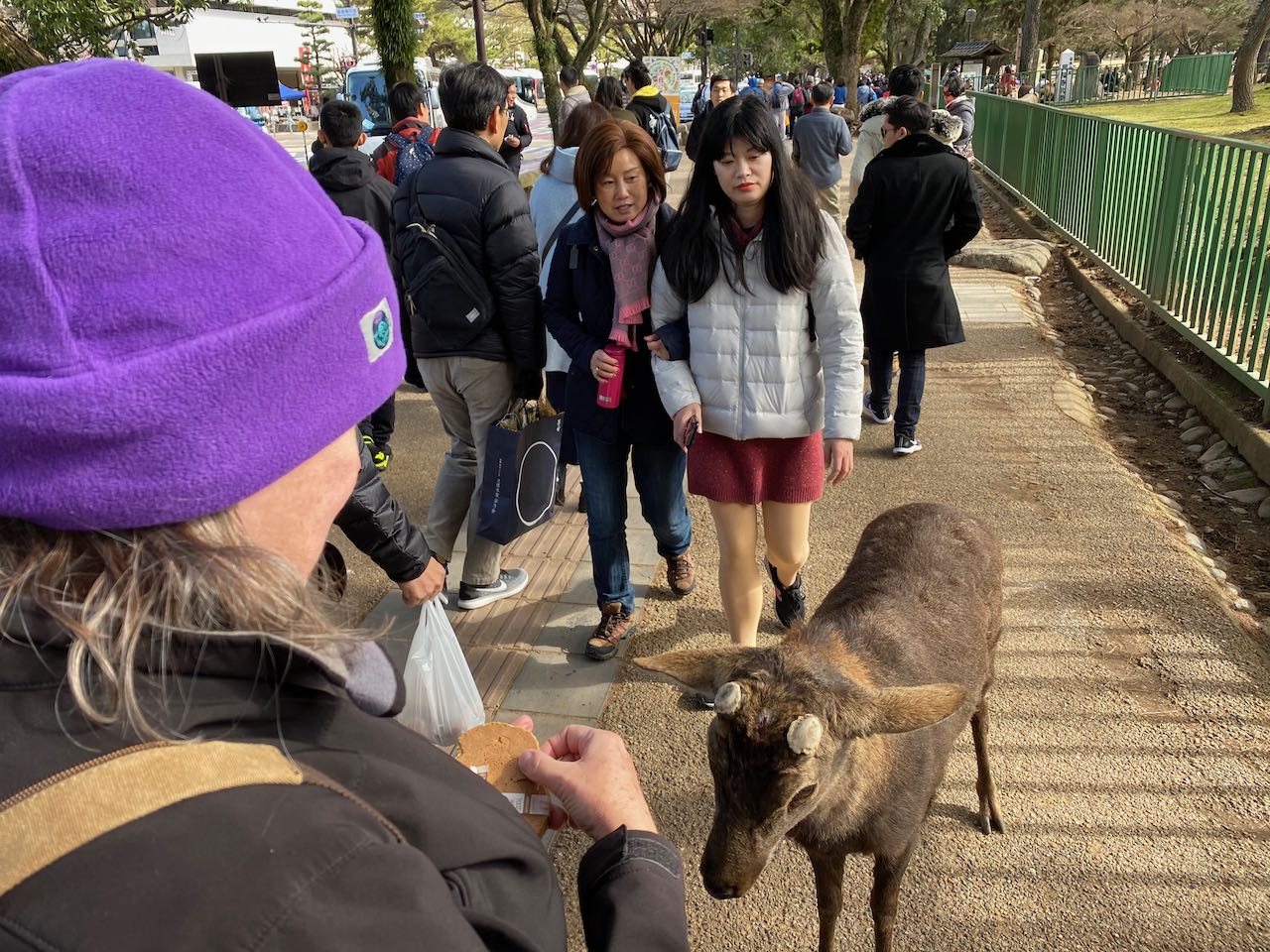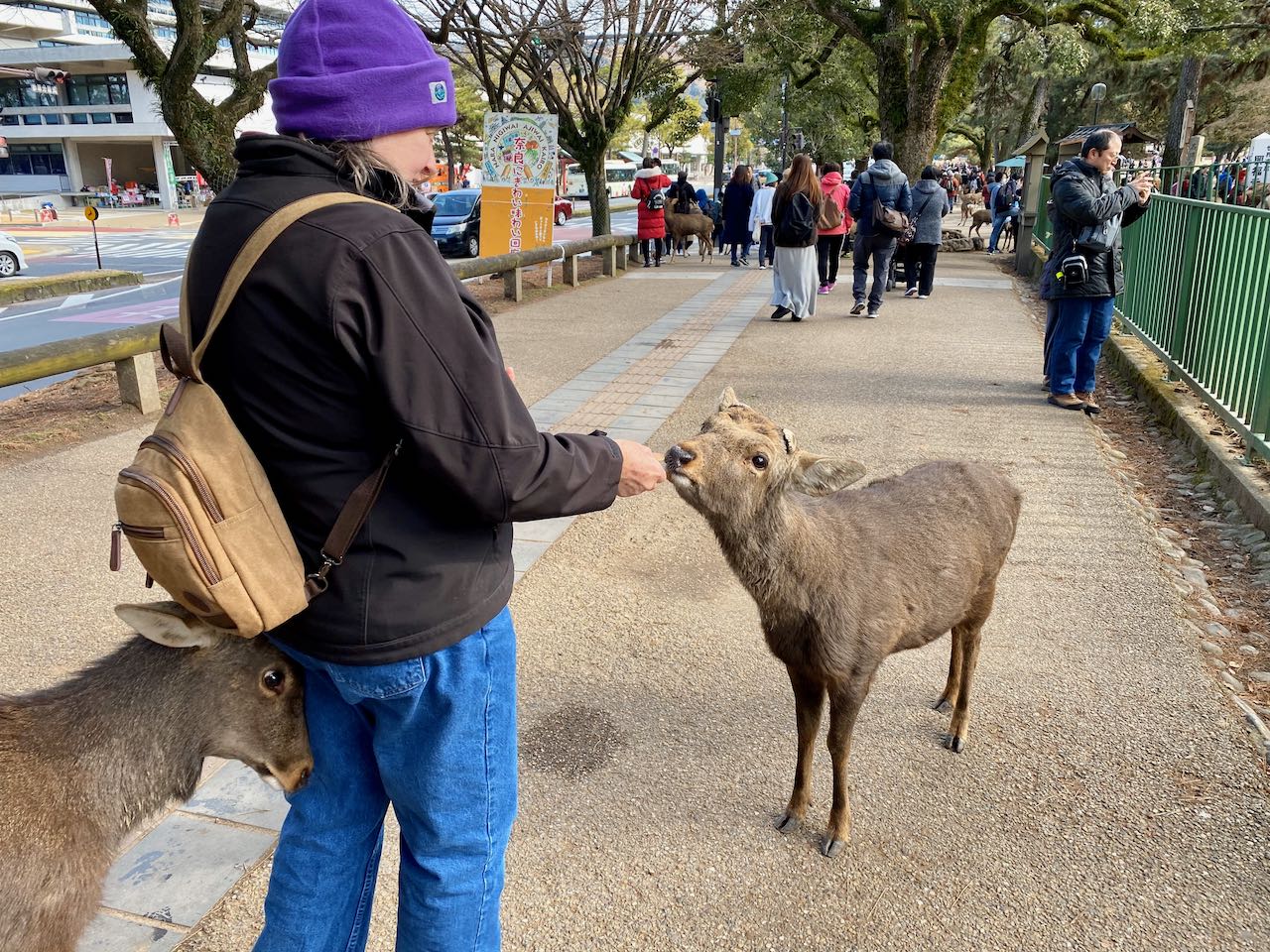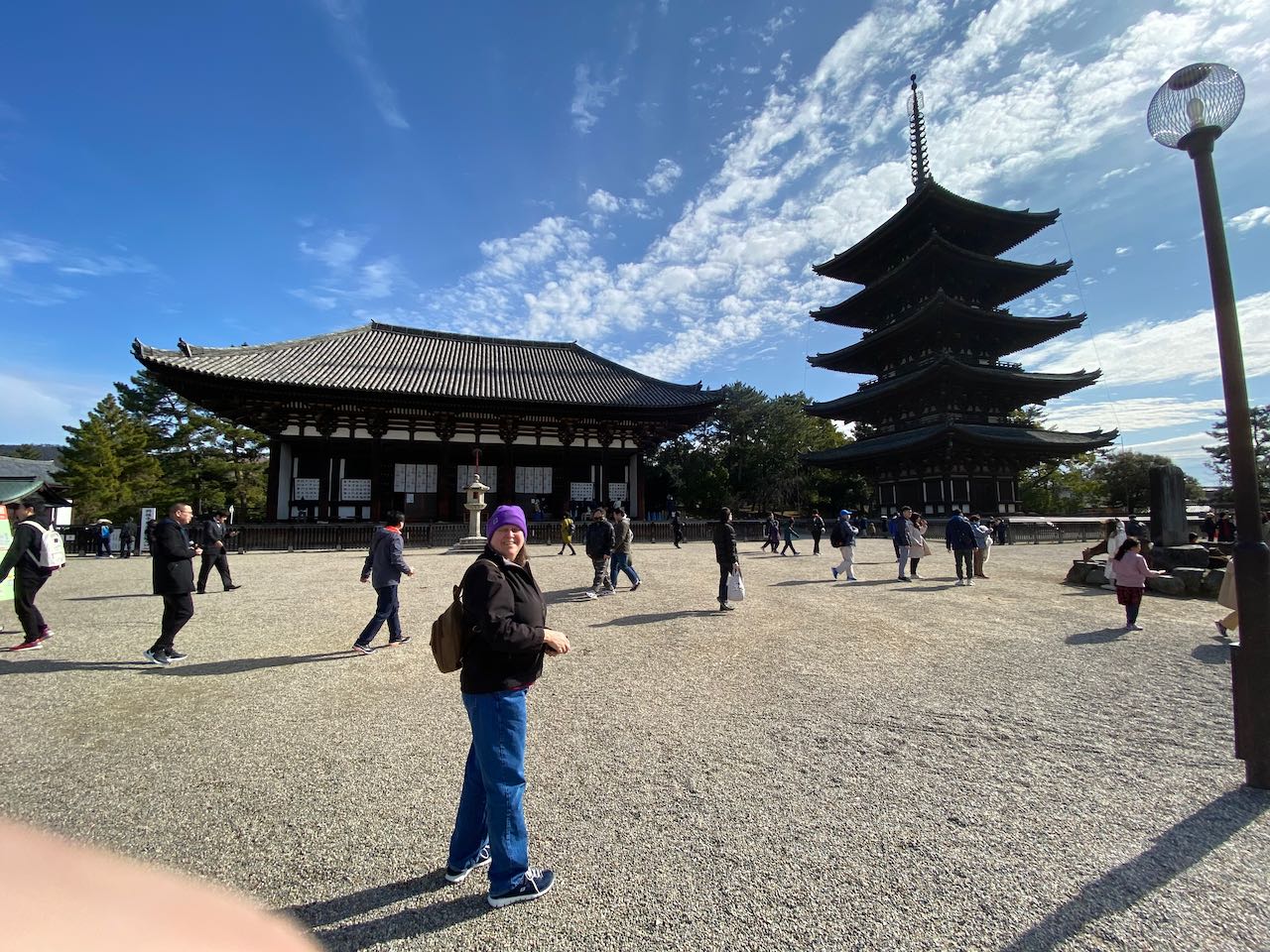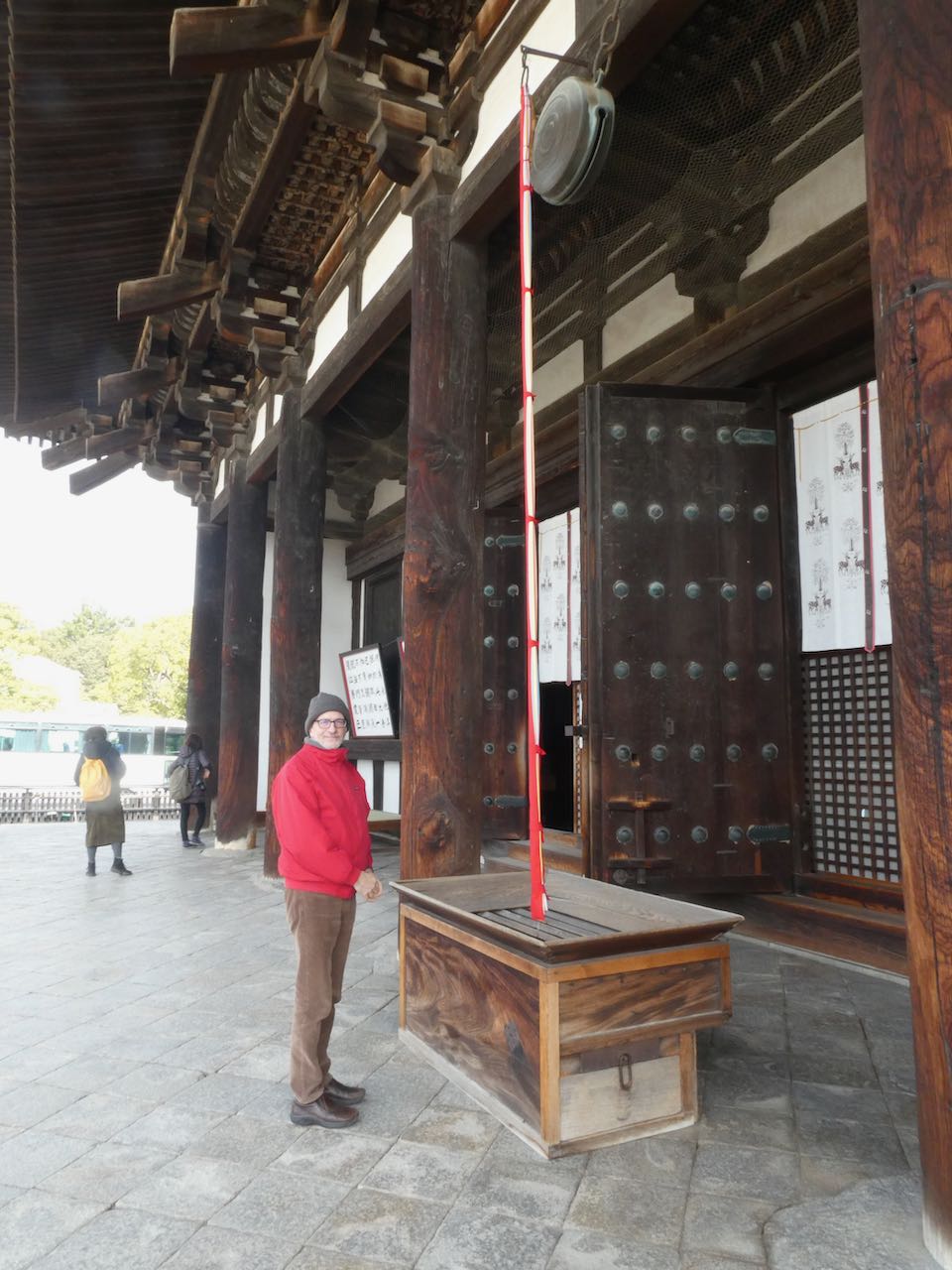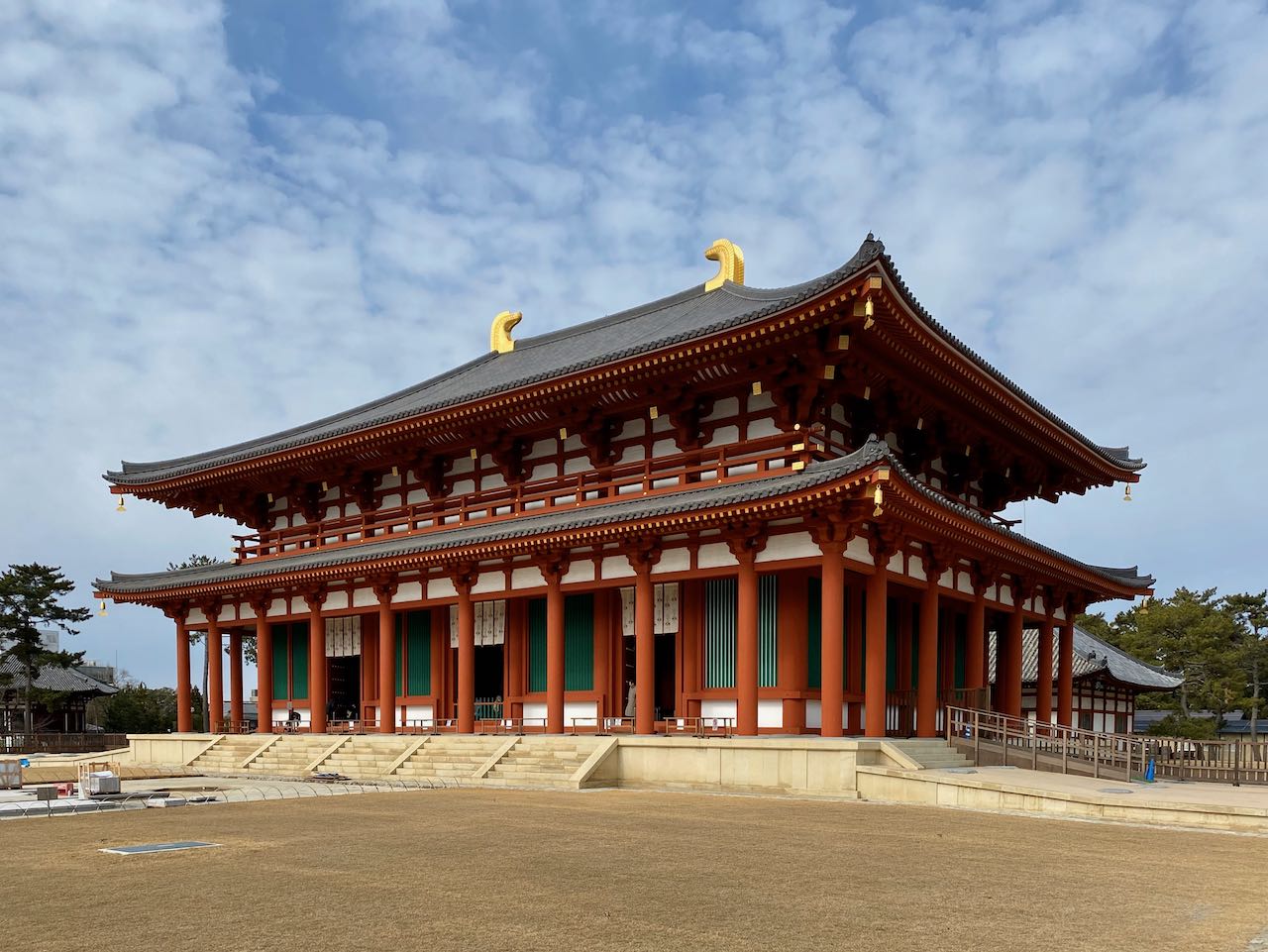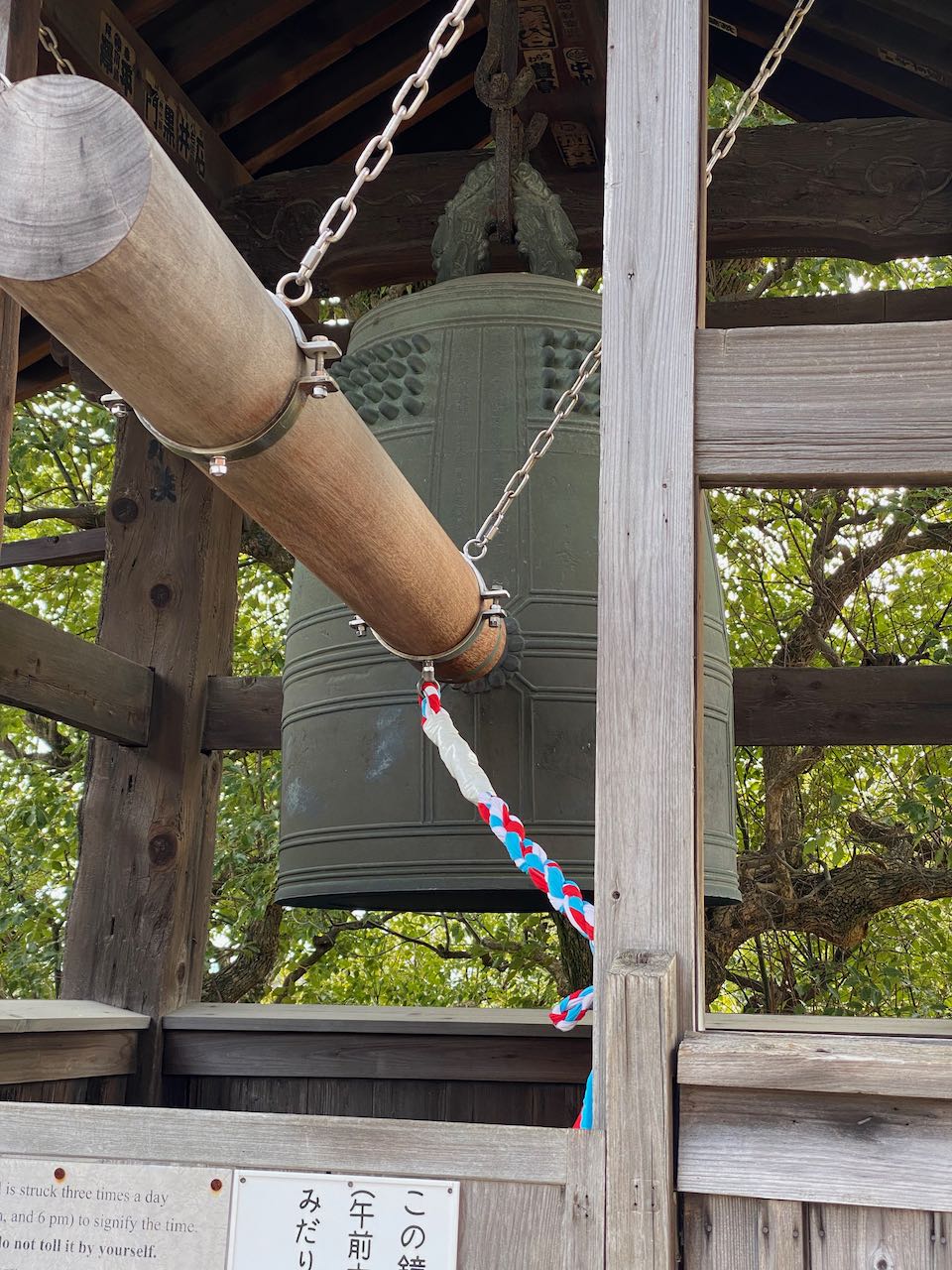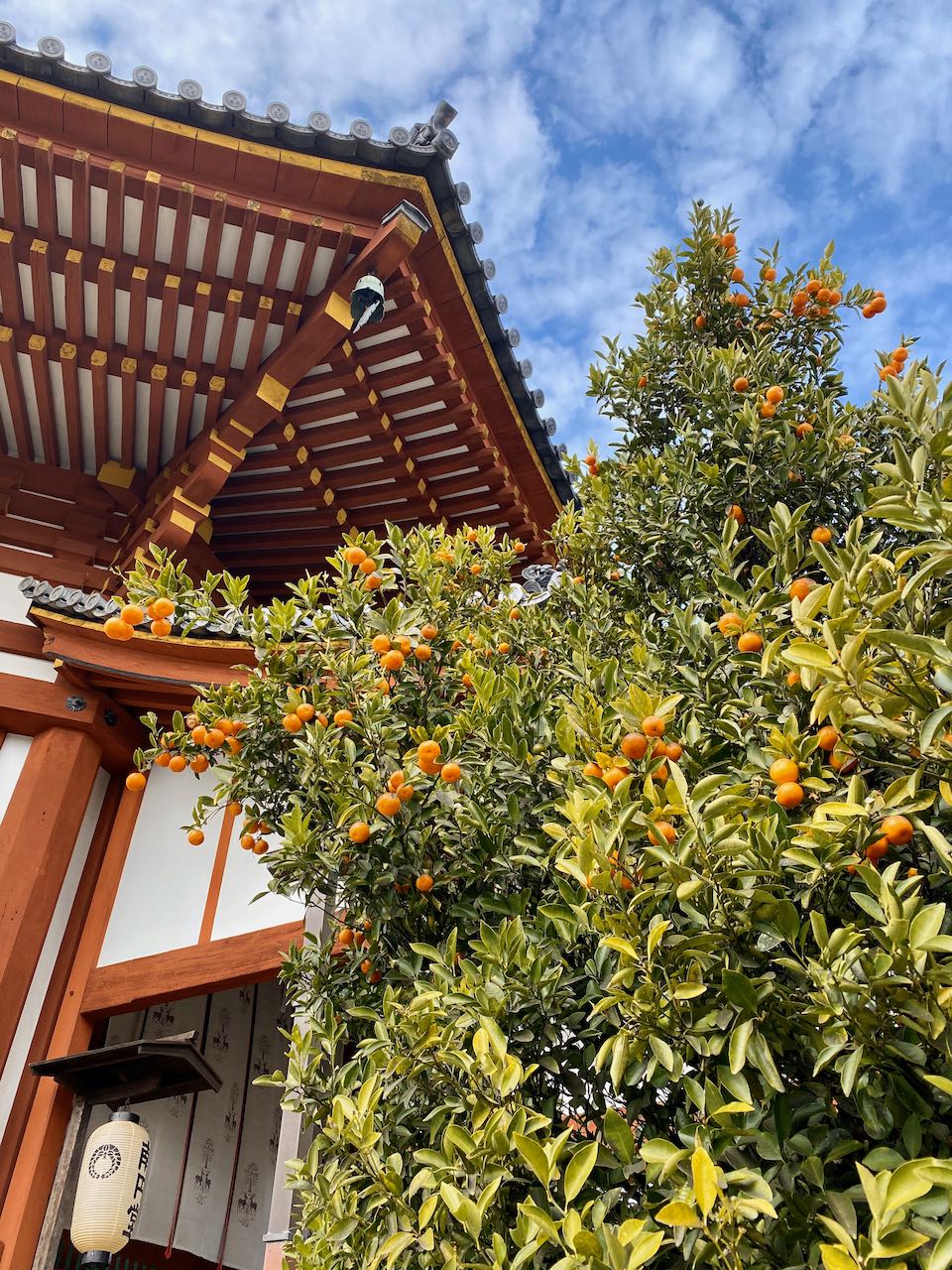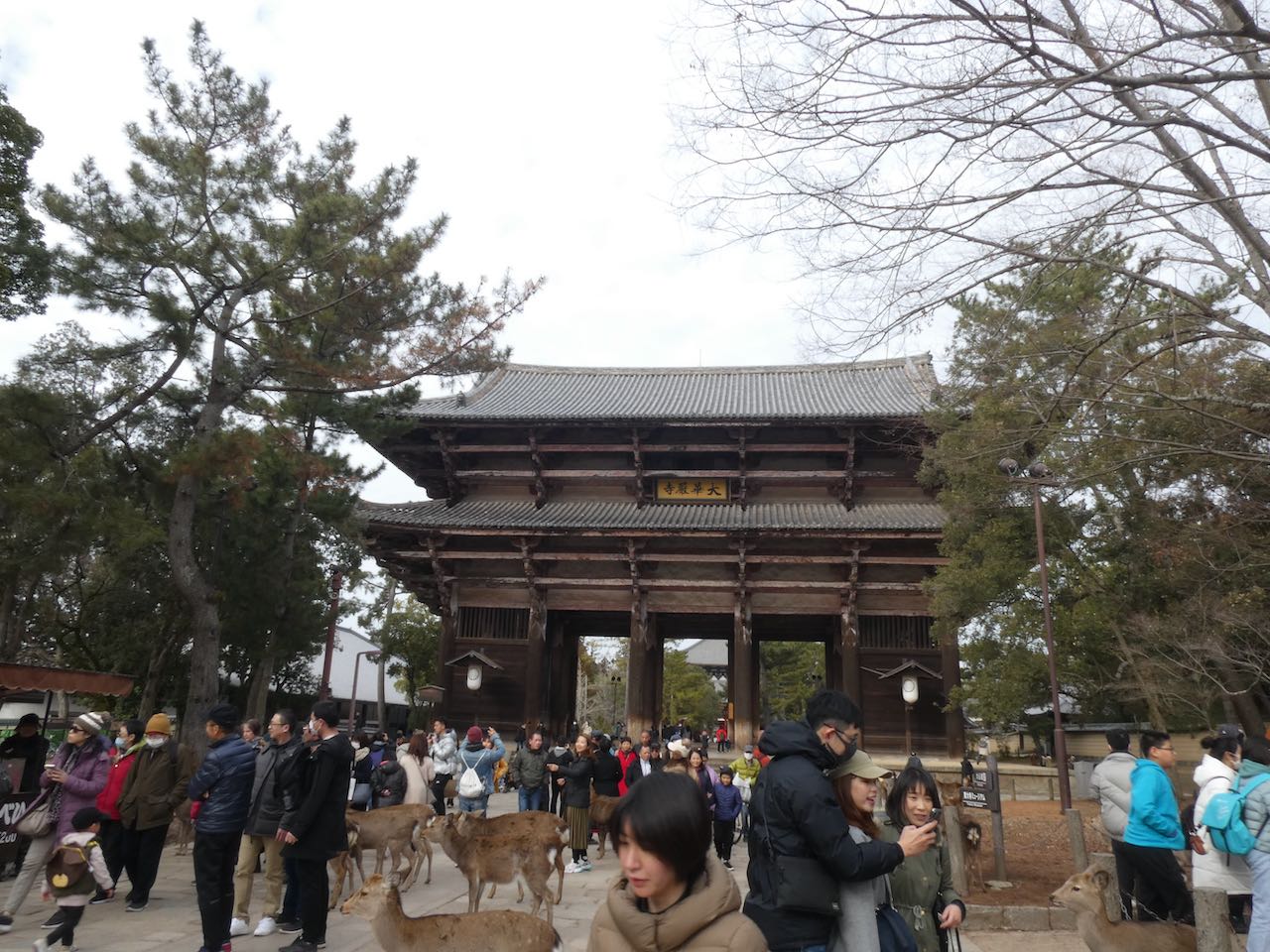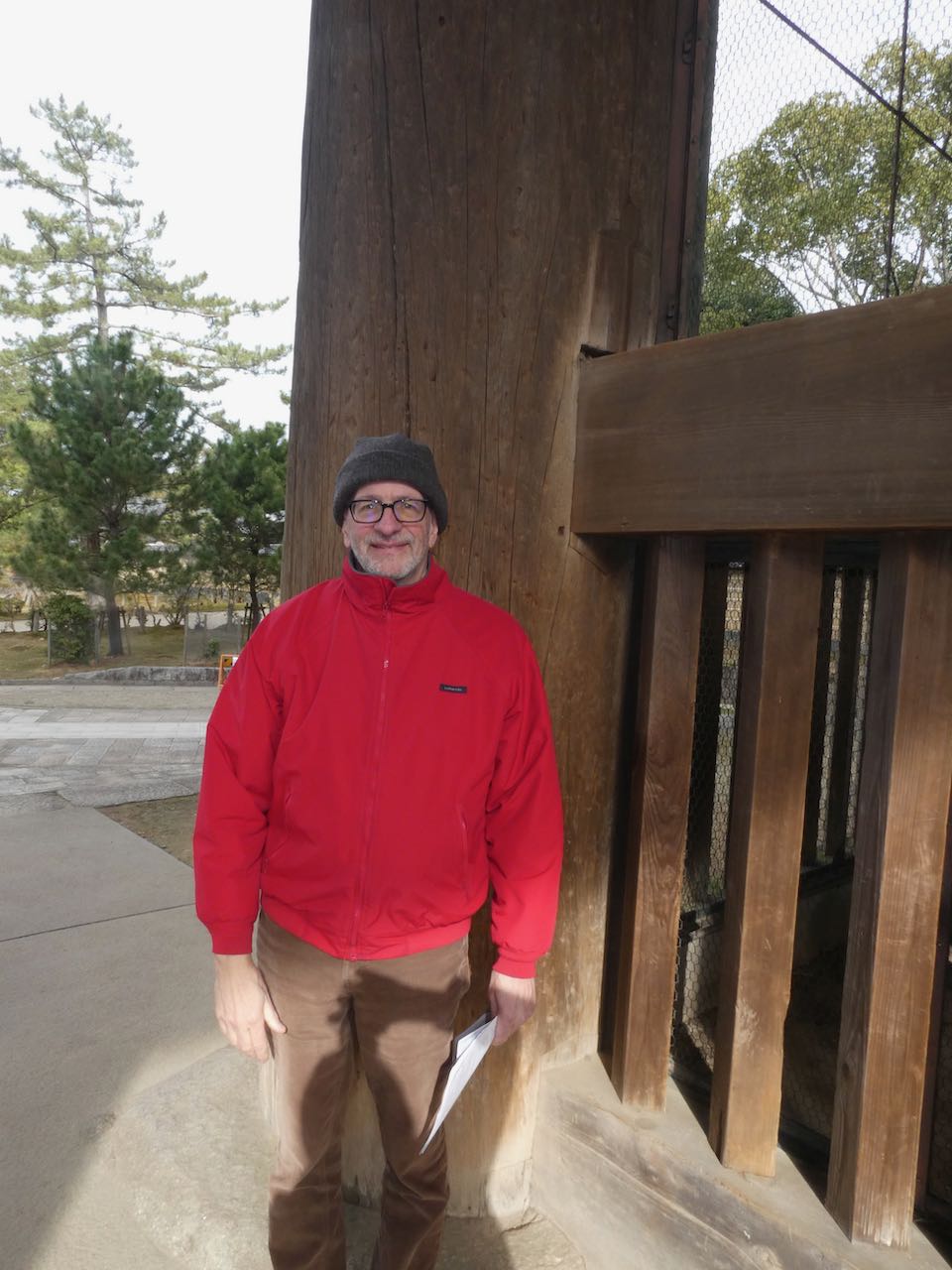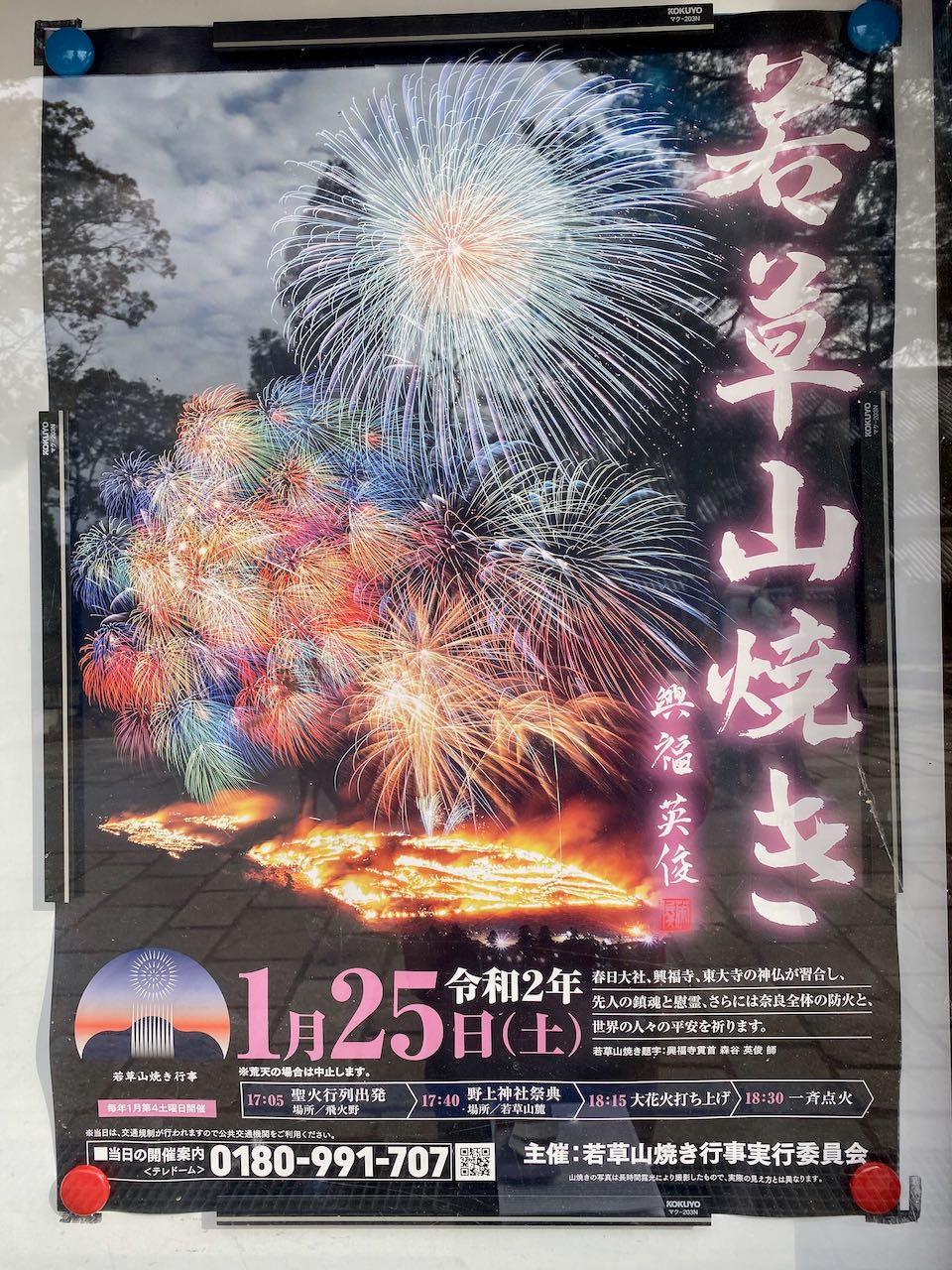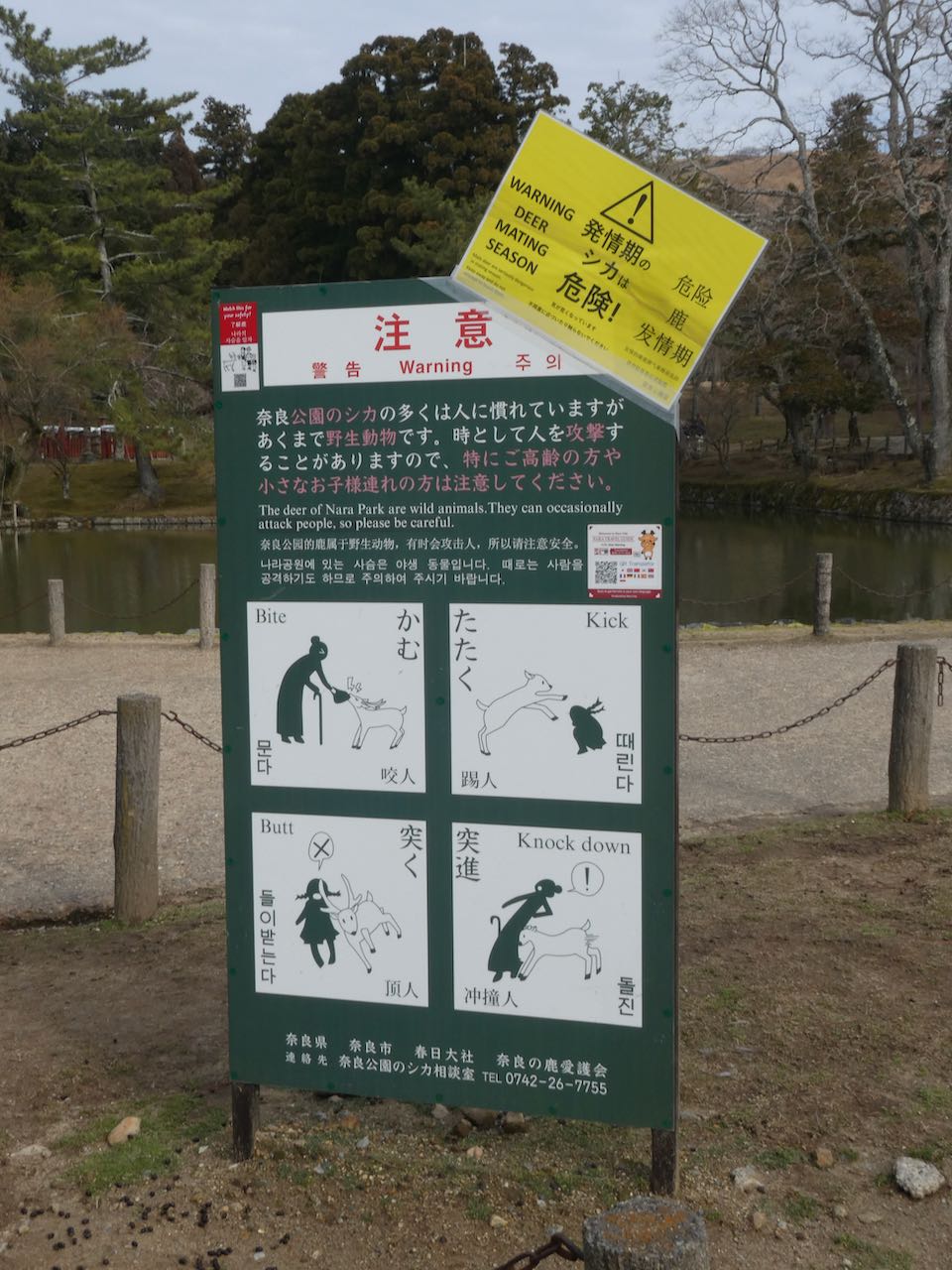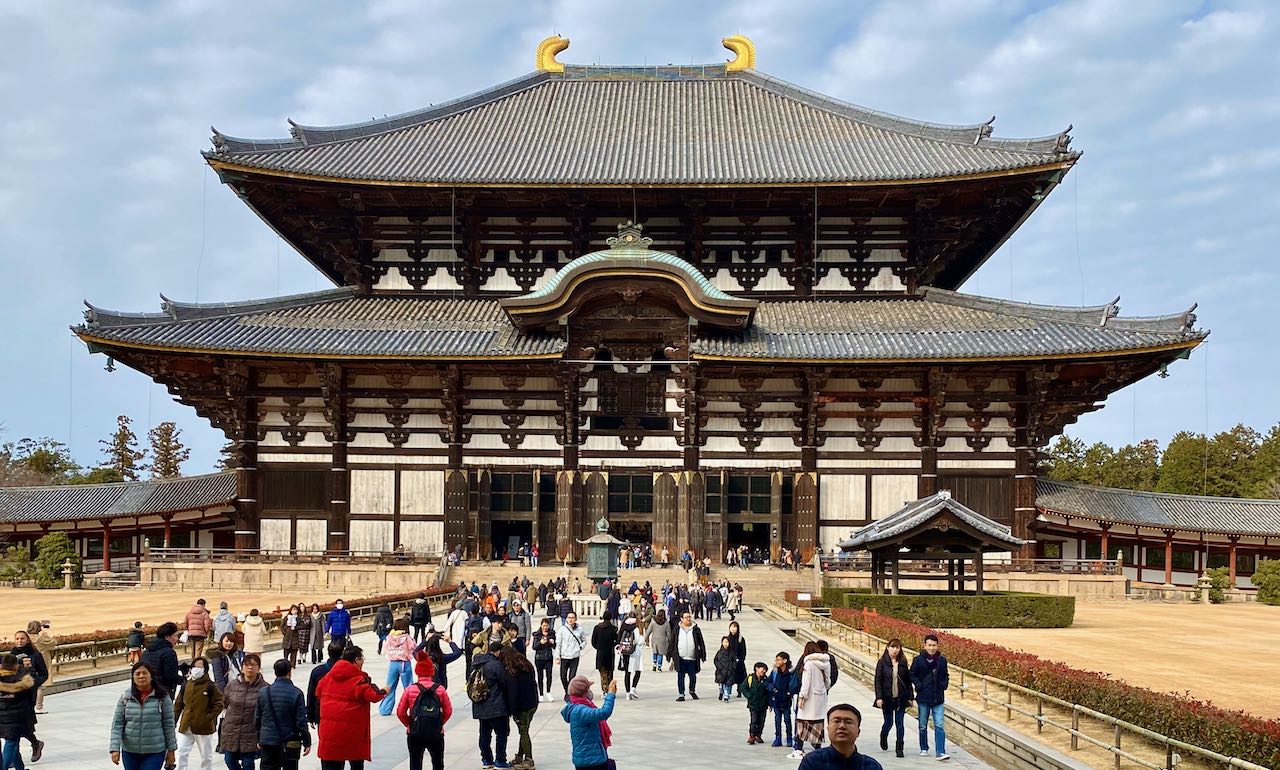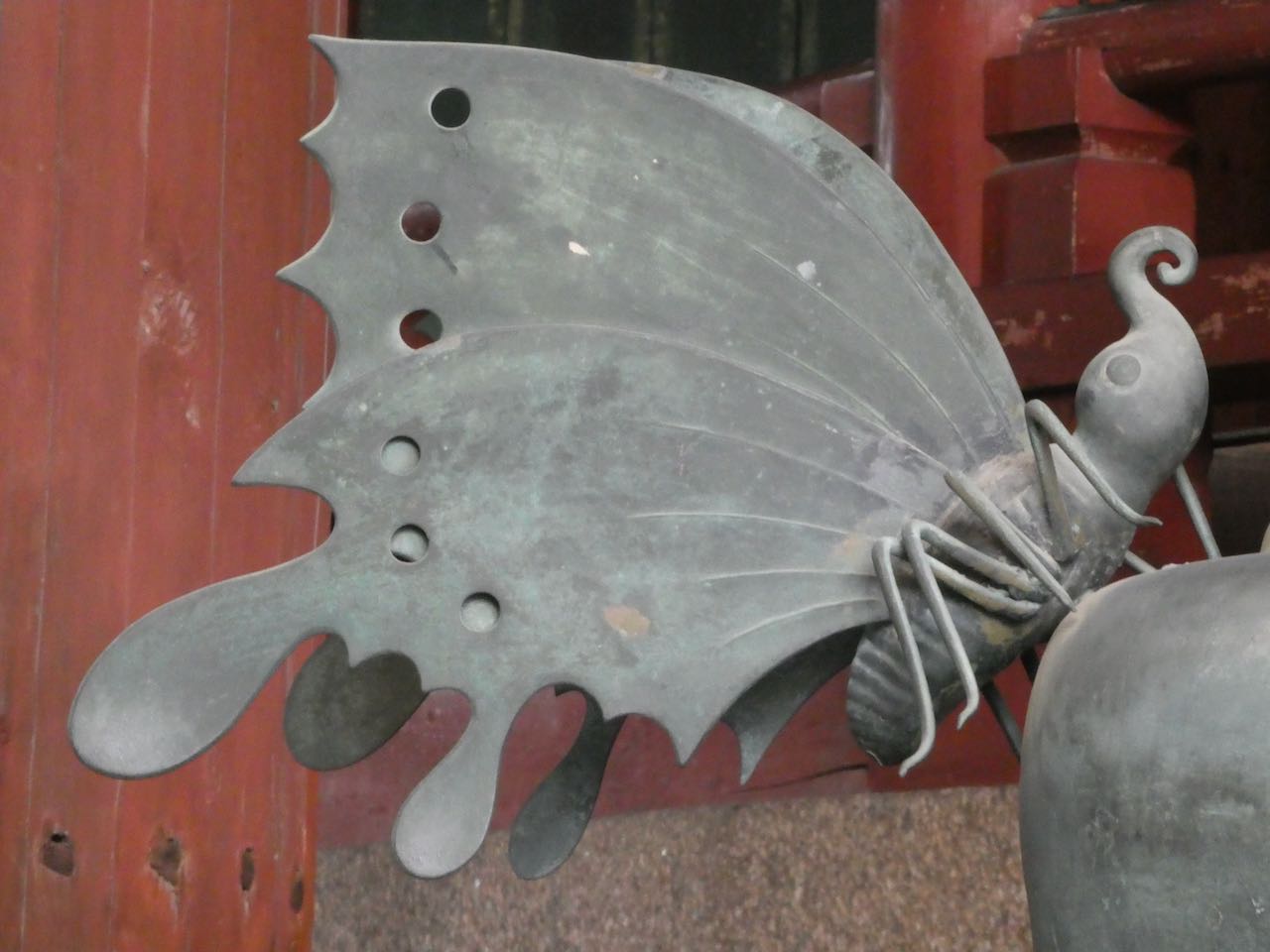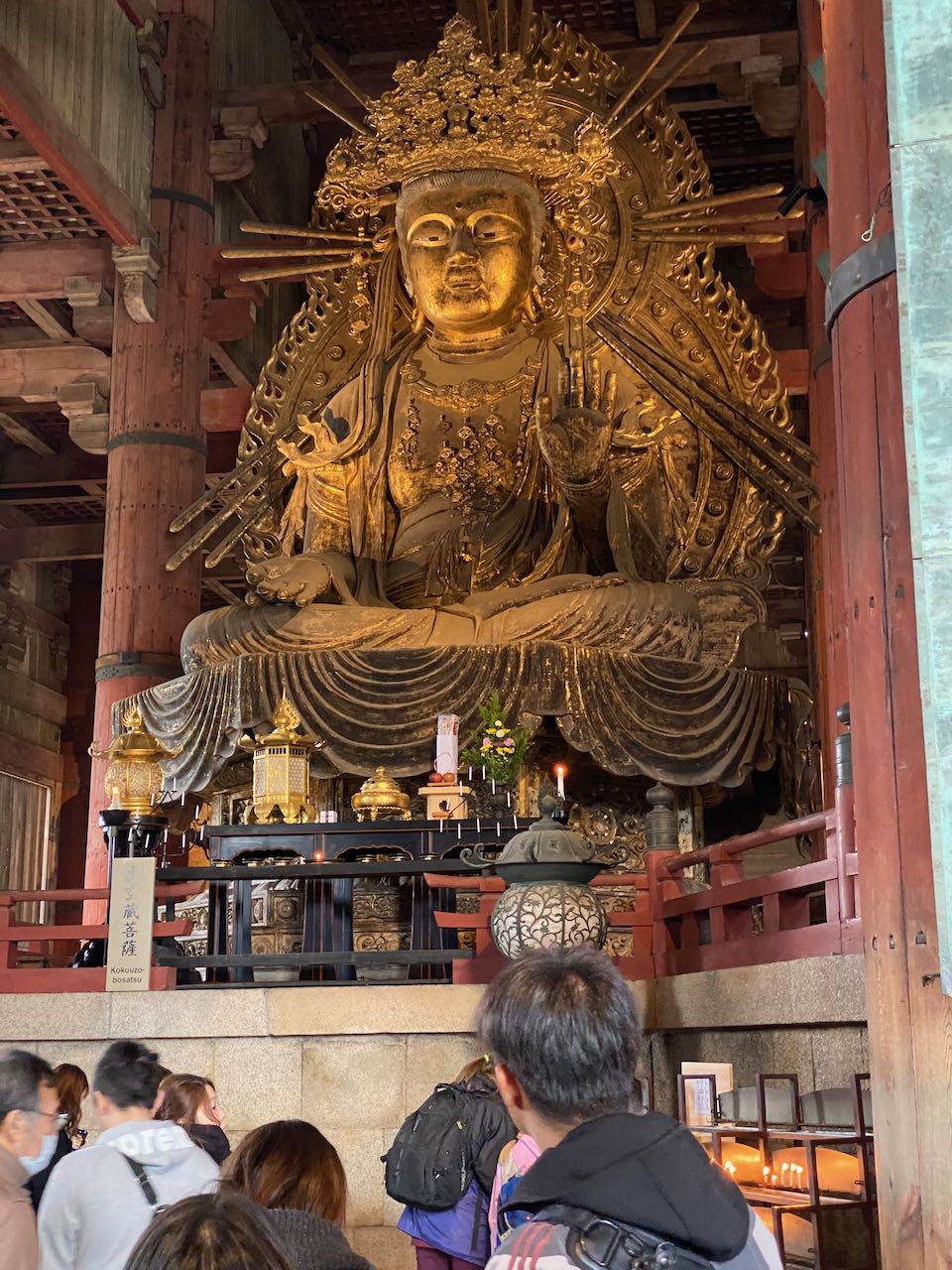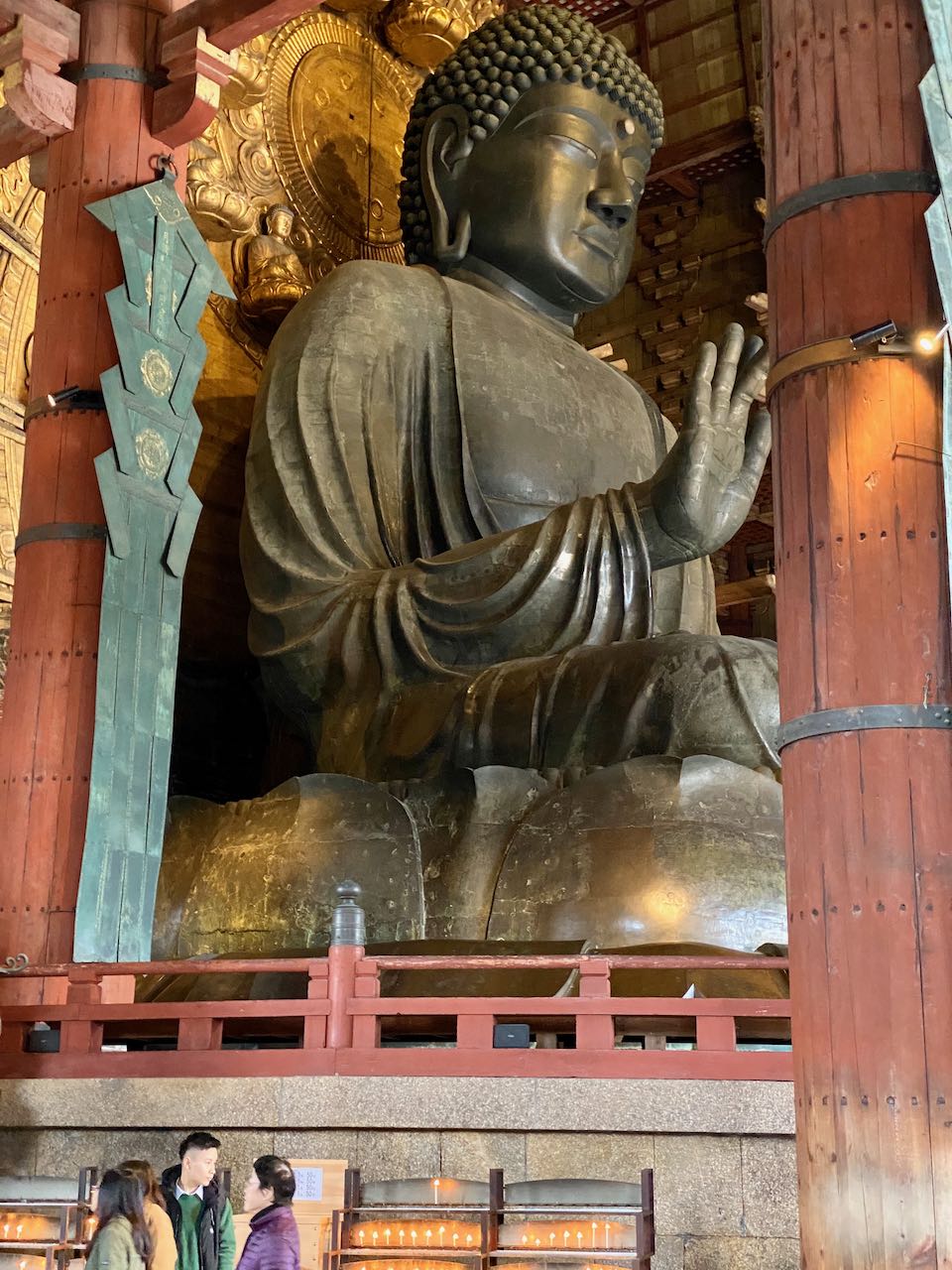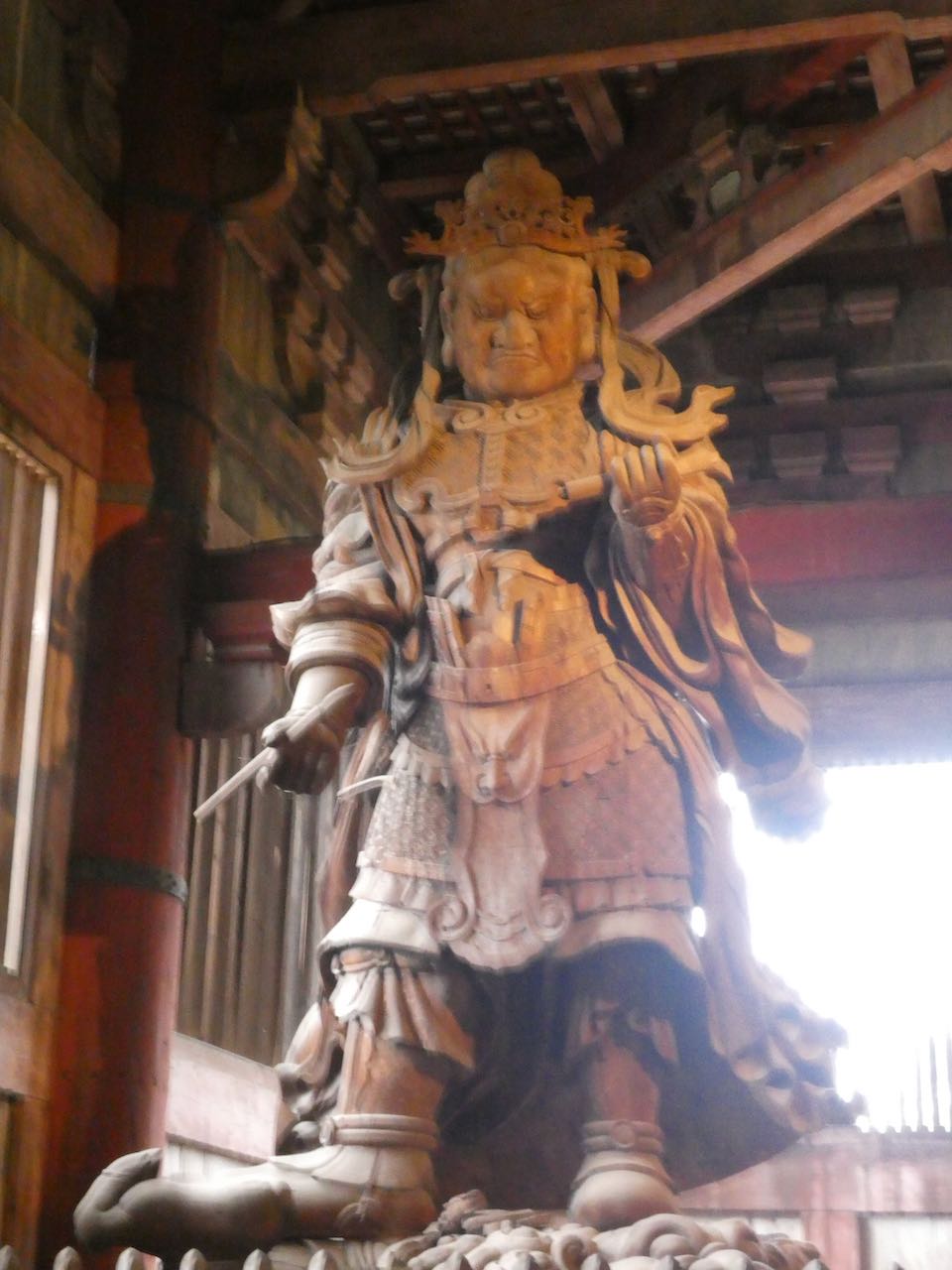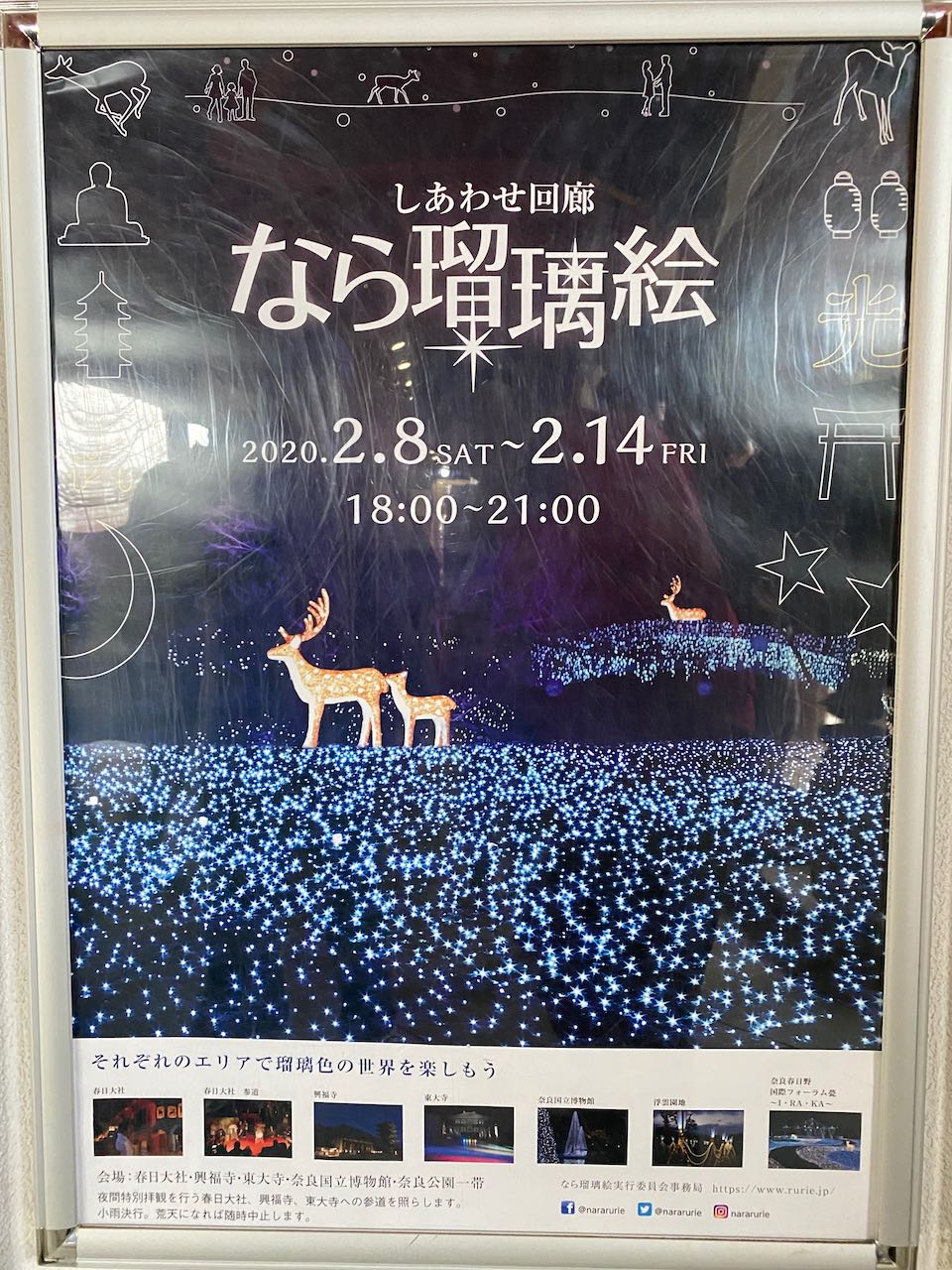Jan 25 2020
We struck out on our own to visit the city of Nara, the first “permanent” capital of ancient Japan in the 8th Century. Transit in Japan is fantastic – fast, efficient, cheap, and unbelievably punctual! No trouble at all getting a train directly from the port to Sannomiya Station in central Kobe, and then an express train to Nara (about 90 minutes away).
Lots of fun people-watching on the train. Japan has a huge demographic problem: a shrinking and aging population with way too many people my age and a looming shortage of children. Little kids on the trains and on the streets are adorable, their young parents dance and play with them and they squeal with joy. Maybe ¼ of the people we see wear face masks against germs. I know this is pretty common in Japan, but I wonder if there’s heightened sensitivity regarding the coronavirus outbreak.
Getting off the train in Nara, we followed the crowd toward the huge park, past an endless row of street food vendors. The park is home to many ancient and medieval temples and shrines from the imperial period, and there’s a mountain at the back of the park which is to host a huge bonfire and fireworks display at dusk and then they burn the dry grass on the mountain to celebrate the Lunar New Year!
Nara was the capital of Japan from 710 to 784 CE. Previously the capital was moved every time the emperor died. The city was modeled after Chang’an, the capital city of Tang dynasty China. The Nara court aggressively imported Chinese civilization by sending diplomatic envoys to the Tang court. The capital moved again in 794 to nearby Kyoto (Heian period) where it remained for 900 years.
The park is populated by hundreds of semi-tame “sacred” deer who beg for rice crackers (packages of which are conveniently on sale at mobile carts for $2). The deer approach and bow in the Japanese tradition. Passersby bow in reply. Then the people offer the deer a cracker. Jennifer had a lot of fun with the bowing and was of course very popular with the sacred deer!
We visited the Kohufuji Temple complex in the morning. The temples were originally built in 726 CE, and house beautiful statues of the “Medicine Buddha” and his entourage of Bodhisattvas. Buddhism was permanently established in Imperial Japan by Emperor Shōmu, and was heavily promoted by the Fujiwara family. They were prominent aristocrats who exercised “power behind the throne” by having their daughters marry Emperors for centuries in the Nara and Heian periods.
After a hearty lunch we passed deeper into the park and visited the Tōdai-ji Temple and its Great Buddha. This was the most impressive Buddha figure I’ve ever seen! It’s five stories tall, and the Temple that has housed it for over 1265 years is the largest wood frame building in Japan. The Great Buddha and its Temple was commissioned in 743 CE by Emperor Shomo . More than 2 million people worked on the project, which was completed in 753.
The incredibly imposing statues and Temples draw pilgrims from around Japan, perhaps more on the Festival day than any other. Certainly there were 10s of thousands of people visiting when we were there, maybe 100s of thousands. Some among the throngs were reverent toward the icons, but Japan is a very secular society. Most of all people seemed to revel in the festival atmosphere. Lots of families with young kids, people snacking on street food, and waiting for the big event at dusk.
Sadly, we crapped out and decided to head back to the ship around 3 PM. We had walked for miles and just didn’t have the energy to hang out another 3 or 4 hours waiting for the fireworks. Others we talked with later said the show was truly magnificent, and also that the crowds were hard to negotiate.
We took two trains back to Kobe, arriving in time for dinner on the ship and an early bedtime.


